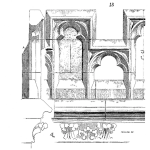
Design your safety system with the workplace safety culture and safety practices you want
Use the ACE 3T culture change technique to design, teach and adopt the best safety culture into your organization
Here’s a workplace safety culture change fact we’ve known about for a long time. This quote from G. J. Hofstede in his book, Cultures and Organisations, explains a lot about how you create the right workplace safety culture.
“Changing collective values of adult people in an intended direction is extremely difficult, if not impossible. Values do change, but not according to someone’s master plan. Collective practices, however, depend on organisational characteristics like structures and systems, and can be influenced in more or less predictable ways by changing these.”
You start changing to the workplace safety culture you want by first installing the right processes and systems into your business. Then you teach your people to follow them.
To make serious safety culture change improvements you need to first focus all your efforts and resources on changing attitudes and beliefs. You need to change the way people think about, and value, safety and about the use of safe work practices.
You cannot change people’s internal values, but what you can change is the safety practices they must follow so the cognitive dissonance from their experiences brings about change in their safety values and safety attitude. Cognitive dissonance is the uncertainty and unhappiness that happens in your mind if you believe one thing, but are forced to do something else.
How to Get the Right Workplace Safety Culture Changes
For example, if you want your people to do safe work, provide a high quality, detailed procedure which includes the safe work practices they must follow. Be very specific in the procedure and describe in your safety instructions what, when and how they are to use the safe practices you want done. You should also include a report sheet for them to complete and hand-up at the end of the job, so you can encourage and train them to do safe work. This is the way you apply G. J. Hofstede’s advice. If, when the procedures are exactly followed, your people produce better safety results than they ever achieved without the procedure, they will start to change their belief.
Their old internal values change because the external evidence does not support them. This is cognitive dissonance in action. In this way the safe work practice requirements built into your procedures brings about the necessary change in the value people put-on careful observation, doing safe work and using safe workplace practices. You use your standard operating procedures to describe and create the ‘safety role model’ you want your people to follow.
Start An Accuracy Controlled Enterprise (ACE) Workplace Safety Culture Change
Remember always the famous advice of quality guru, the late W. Edwards Deming, “Your system is perfectly design to give you the results that you get!” He advises you can redesign your safety system with the safety culture you want and put it into use. The introduction of safety culture change into organisations, and the success of the change program, requires determined senior management commitment and leadership. But first you must design into your work procedures the safety practices to be adopted by your people.
Use the ACE 3T method in your safety procedure writing. In an ACE procedure you set the very best safety practice performance you want and the worst safety practice performance you will accept. Your people are taught the correct safety practices and those actions and behaviours become the way they are to do the work forevermore in your company.
The ACE approach exactly matches G. J. Hofstede’s advice in his book, “Collective practices, however, depend on organisational characteristics like structures and systems, and can be influenced in more or less predictable ways by changing these.” With ACE procedures you introduce and describe the very safety culture change you want to have. This will deliver a ‘predictable’ change in your workplace safety practices.
You create the workplace safety culture you want when you use the ACE 3T culture change technique to design, teach and adopt the best safety culture change in your company. For more information on ACE 3T safety culture change you can telephone us during office hours, or send an email anytime and we’ll respond to your email the same or next working day.
Leave a Reply